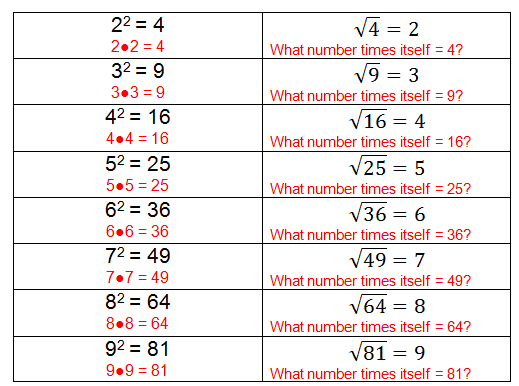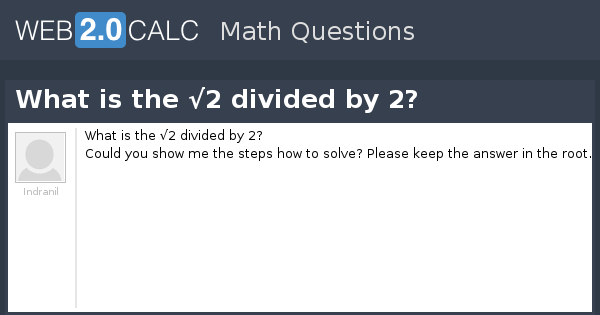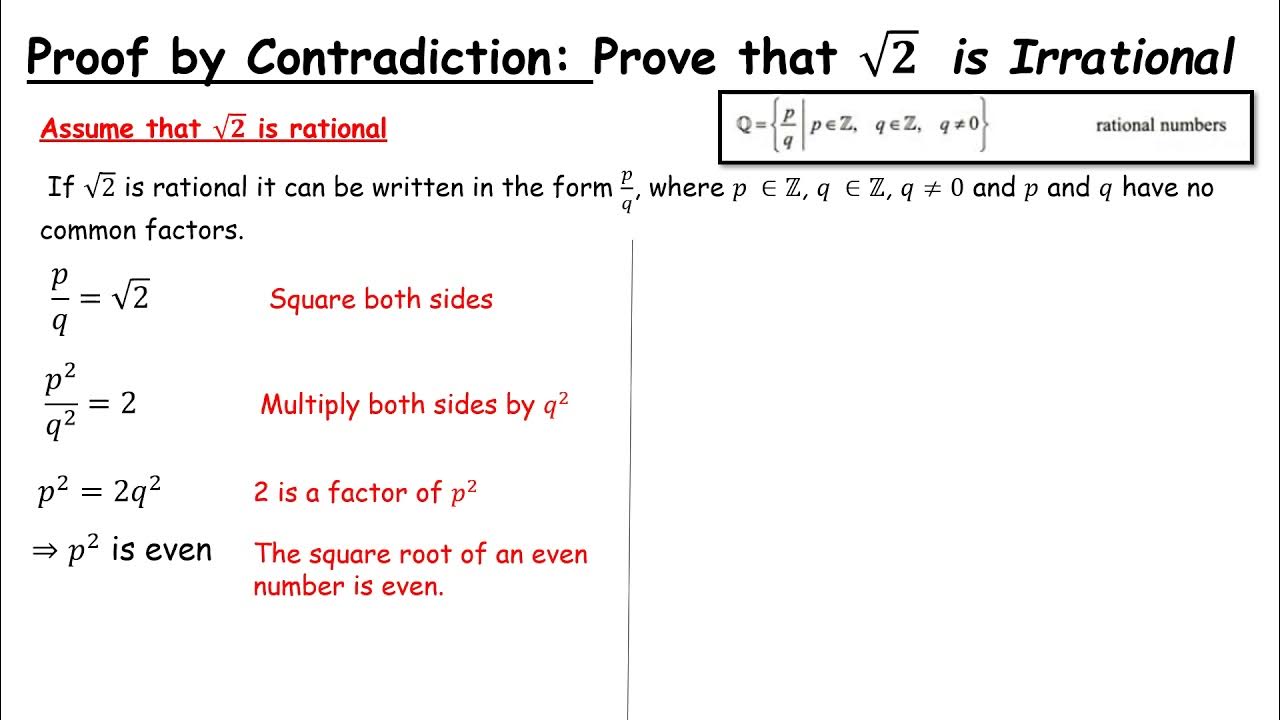Topic square root of 2 rational or irrational: The square root of 2 has long intrigued mathematicians and enthusiasts alike. Is it rational or irrational? This article delves into the fascinating history, proofs, and implications of this seemingly simple yet profoundly important number. Join us as we uncover why \( \sqrt{2} \) is a cornerstone in the world of mathematics.
Table of Content
- Is the Square Root of 2 Rational or Irrational?
- Introduction to the Square Root of 2
- Definitions: Rational and Irrational Numbers
- Historical Context of the Square Root of 2
- Proof by Contradiction: Irrationality of the Square Root of 2
- Geometric Interpretation of the Square Root of 2
- Applications of the Square Root of 2
- Common Misconceptions about the Square Root of 2
- Alternative Proofs of the Irrationality of the Square Root of 2
- Famous Mathematicians and the Square Root of 2
- Impact of the Square Root of 2 on Mathematics
- Conclusion: The Significance of the Square Root of 2
- YOUTUBE: Video chứng minh rằng căn bậc hai của 2 là số vô tỉ, giải thích chi tiết từ Khan Academy. Tìm hiểu lý do tại sao số này không thể là một phân số.
Is the Square Root of 2 Rational or Irrational?
The square root of 2 is a number that, when multiplied by itself, gives the product 2. This number is commonly denoted as \( \sqrt{2} \).
Definition of Rational and Irrational Numbers
A rational number is any number that can be expressed as the quotient or fraction \( \frac{p}{q} \) of two integers, where \( p \) and \( q \) are integers and \( q \neq 0 \).
An irrational number is a number that cannot be written as a simple fraction - that is, it cannot be expressed as \( \frac{p}{q} \).
Proof that \( \sqrt{2} \) is Irrational
The proof that \( \sqrt{2} \) is irrational is often done by contradiction. Here is a step-by-step outline of the proof:
- Assume that \( \sqrt{2} \) is a rational number. This means it can be written as \( \frac{a}{b} \), where \( a \) and \( b \) are coprime integers (i.e., their greatest common divisor is 1) and \( b \neq 0 \).
- Then \( (\sqrt{2})^2 = \left(\frac{a}{b}\right)^2 \), which implies \( 2 = \frac{a^2}{b^2} \).
- By multiplying both sides by \( b^2 \), we get \( 2b^2 = a^2 \).
- This implies that \( a^2 \) is an even number since it is equal to \( 2 \times b^2 \). Therefore, \( a \) must also be even (because the square of an odd number is odd).
- Since \( a \) is even, we can write \( a = 2k \) for some integer \( k \).
- Substituting \( a \) in the equation \( 2b^2 = a^2 \) gives \( 2b^2 = (2k)^2 \), which simplifies to \( 2b^2 = 4k^2 \) or \( b^2 = 2k^2 \).
- This implies that \( b^2 \) is even, and therefore \( b \) must also be even.
- If both \( a \) and \( b \) are even, they have a common factor of 2. This contradicts the initial assumption that \( a \) and \( b \) are coprime.
Since assuming that \( \sqrt{2} \) is rational leads to a contradiction, we conclude that \( \sqrt{2} \) must be irrational.

READ MORE:
Introduction to the Square Root of 2
The square root of 2, denoted as \( \sqrt{2} \), is a fundamental mathematical constant that arises in various contexts, from geometry to algebra. It is the positive number that, when multiplied by itself, equals 2.
Understanding the nature of \( \sqrt{2} \) involves exploring whether it is a rational or irrational number. This distinction is crucial in mathematics:
- Rational Numbers: These can be expressed as a fraction \( \frac{p}{q} \), where \( p \) and \( q \) are integers and \( q \neq 0 \).
- Irrational Numbers: These cannot be written as a simple fraction. Their decimal expansions are non-repeating and non-terminating.
The discovery that \( \sqrt{2} \) is irrational is attributed to ancient Greek mathematicians, who found that it cannot be expressed as a fraction. This discovery had profound implications for the development of mathematics.
To understand why \( \sqrt{2} \) is irrational, consider the proof by contradiction:
- Assume \( \sqrt{2} \) is rational, so it can be written as \( \frac{a}{b} \) where \( a \) and \( b \) are coprime integers.
- Then \( 2 = \left(\frac{a}{b}\right)^2 \) implies \( 2b^2 = a^2 \).
- This shows \( a^2 \) is even, so \( a \) must be even. Let \( a = 2k \).
- Substitute \( a \) into the equation to get \( 2b^2 = (2k)^2 \), leading to \( b^2 = 2k^2 \).
- This implies \( b \) is also even, contradicting the assumption that \( a \) and \( b \) are coprime.
Therefore, \( \sqrt{2} \) is irrational, making it an essential concept in understanding the nature of numbers and their properties.
Definitions: Rational and Irrational Numbers
Understanding the distinction between rational and irrational numbers is crucial for grasping why the square root of 2 is considered irrational.
Rational Numbers:
- Rational numbers are numbers that can be expressed as a fraction \( \frac{p}{q} \), where \( p \) and \( q \) are integers and \( q \neq 0 \).
- The decimal representation of a rational number is either terminating or repeating.
- Examples of rational numbers include:
- \( \frac{1}{2} = 0.5 \)
- \( \frac{3}{4} = 0.75 \)
- \( 0.333... = \frac{1}{3} \)
Irrational Numbers:
- Irrational numbers cannot be expressed as a simple fraction \( \frac{p}{q} \).
- The decimal representation of an irrational number is non-terminating and non-repeating.
- Examples of irrational numbers include:
- \( \pi \approx 3.14159...\)
- \( e \approx 2.71828...\)
- \( \sqrt{2} \approx 1.41421...\)
The key difference lies in the ability to represent the number as a fraction of two integers. Rational numbers fit neatly into this form, while irrational numbers do not, showcasing the complexity and richness of the number system.
Historical Context of the Square Root of 2
The discovery of the square root of 2 and its properties has a rich historical background, dating back to ancient civilizations.
Ancient Babylon:
- One of the earliest known approximations of \( \sqrt{2} \) is found on a Babylonian clay tablet (circa 1800-1600 BCE), which gives a value of approximately 1.41421.
Ancient Greece:
- The Pythagoreans, followers of the Greek mathematician Pythagoras, discovered the irrationality of \( \sqrt{2} \) while studying the properties of right-angled triangles.
- This discovery reportedly caused a crisis among the Pythagoreans, as it challenged their belief that all numbers could be expressed as the ratio of two integers.
Euclid's Elements:
- In the 4th century BCE, the Greek mathematician Euclid provided one of the first known proofs of the irrationality of \( \sqrt{2} \) in his work "Elements," using a method of contradiction.
Indian Mathematicians:
- In ancient India, mathematicians such as Baudhayana and later Aryabhata also studied and approximated \( \sqrt{2} \), contributing to a broader understanding of its value and properties.
The discovery and proof of the irrationality of \( \sqrt{2} \) marked a significant milestone in the history of mathematics. It not only challenged existing mathematical paradigms but also paved the way for future explorations into the nature of numbers and their properties.
Proof by Contradiction: Irrationality of the Square Root of 2
The proof that the square root of 2 is irrational is a classic example of a proof by contradiction. This method assumes the opposite of what we want to prove and shows that this assumption leads to a contradiction. Here is the step-by-step proof:
- Assume that \( \sqrt{2} \) is rational. This means it can be expressed as \( \frac{a}{b} \), where \( a \) and \( b \) are coprime integers (i.e., their greatest common divisor is 1) and \( b \neq 0 \).
- Then we can write: \[ \sqrt{2} = \frac{a}{b} \] Squaring both sides, we get: \[ 2 = \frac{a^2}{b^2} \] which simplifies to: \[ 2b^2 = a^2 \]
- This implies that \( a^2 \) is even (since it equals \( 2b^2 \)), and therefore \( a \) must be even (because the square of an odd number is odd). Let \( a = 2k \) for some integer \( k \).
- Substitute \( a \) in the equation \( 2b^2 = a^2 \): \[ 2b^2 = (2k)^2 \] which simplifies to: \[ 2b^2 = 4k^2 \quad \text{or} \quad b^2 = 2k^2 \]
- This implies that \( b^2 \) is even, and therefore \( b \) must also be even.
- If both \( a \) and \( b \) are even, they have a common factor of 2. This contradicts our initial assumption that \( a \) and \( b \) are coprime.
Since assuming that \( \sqrt{2} \) is rational leads to a contradiction, we conclude that \( \sqrt{2} \) must be irrational. This proof is elegant in its simplicity and demonstrates the power of logical reasoning in mathematics.
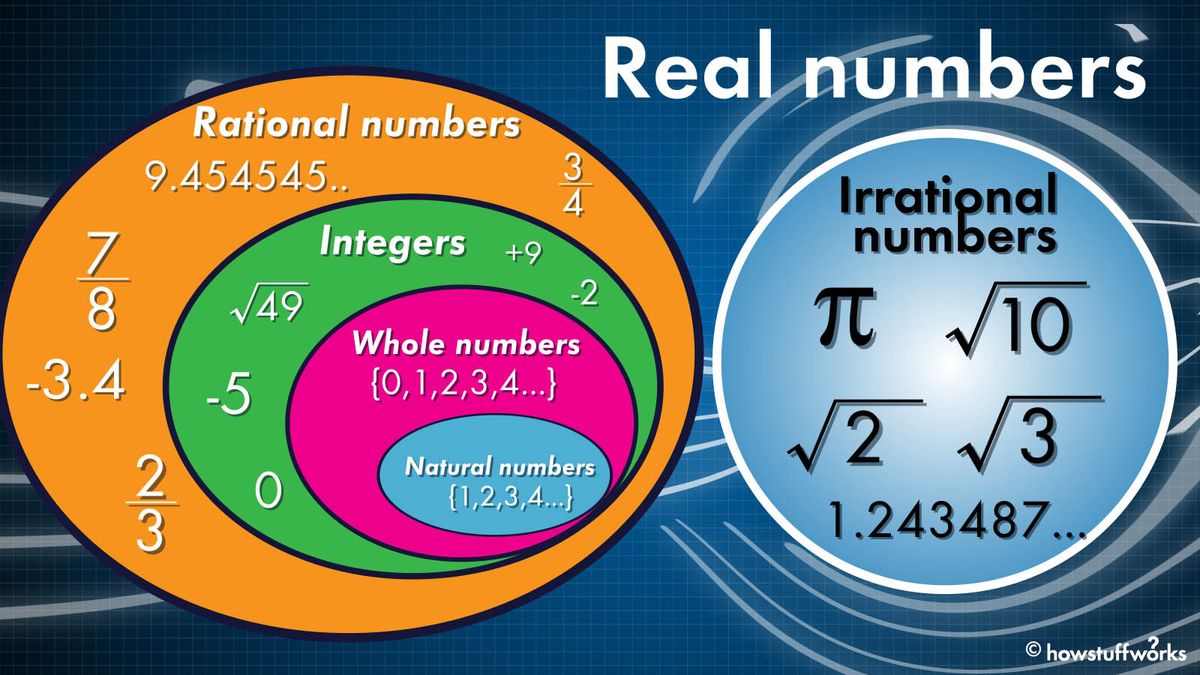
Geometric Interpretation of the Square Root of 2
The square root of 2 has a significant geometric interpretation, particularly in the context of right-angled triangles and the Pythagorean theorem.
The Pythagorean Theorem:
- In a right-angled triangle, the square of the length of the hypotenuse (\(c\)) is equal to the sum of the squares of the lengths of the other two sides (\(a\) and \(b\)): \[ c^2 = a^2 + b^2 \]
Consider a right-angled triangle where both legs are of length 1:
- According to the Pythagorean theorem: \[ c^2 = 1^2 + 1^2 = 2 \] Therefore: \[ c = \sqrt{2} \]
- This means the length of the hypotenuse is \( \sqrt{2} \).
This geometric interpretation shows that \( \sqrt{2} \) is the distance between two points that are one unit apart both horizontally and vertically on a Cartesian plane.
Square Diagonals:
- Another geometric interpretation involves the diagonal of a square. Consider a square with each side of length 1.
- The length of the diagonal can be found using the Pythagorean theorem: \[ \text{Diagonal}^2 = 1^2 + 1^2 = 2 \] Thus, the diagonal length is: \[ \text{Diagonal} = \sqrt{2} \]
These geometric interpretations not only provide a visual understanding of \( \sqrt{2} \) but also reinforce its importance in various mathematical contexts. The fact that \( \sqrt{2} \) cannot be expressed as a simple fraction underscores its irrationality, yet it appears naturally in geometric constructions.
Applications of the Square Root of 2
The square root of 2, \( \sqrt{2} \), is not only a fundamental mathematical constant but also has various practical applications across different fields.
Engineering and Architecture
- Structural Design: \( \sqrt{2} \) is used in calculating the diagonal lengths of squares and rectangles, which is crucial in designing stable structures.
- Geometric Proportions: The constant appears in the design of various geometric shapes and forms, ensuring aesthetic and structural balance.
Computer Science
- Algorithms: The value of \( \sqrt{2} \) is often used in algorithms that involve distance calculations, such as those used in graphics and spatial analysis.
- Data Structures: In computer graphics, \( \sqrt{2} \) helps in defining transformations and rotations in 2D and 3D spaces.
Physics
- Wave Mechanics: The square root of 2 appears in calculations involving wave functions and the normalization of wave amplitudes.
- Optics: It is used in the analysis of light and sound waves, particularly in understanding their propagation and interference patterns.
Mathematics
- Geometry: \( \sqrt{2} \) is essential in the study of geometric properties and relationships, such as the diagonal of a unit square.
- Trigonometry: The value is used in trigonometric identities and calculations, particularly those involving right triangles.
Art and Design
- Aesthetic Proportions: Artists and designers use \( \sqrt{2} \) to achieve pleasing proportions in their works, known as the "root two rectangle" in design principles.
The ubiquity of \( \sqrt{2} \) in various disciplines highlights its importance and utility. Whether in theoretical mathematics or practical applications, the square root of 2 plays a crucial role in advancing our understanding and capabilities in numerous fields.
Common Misconceptions about the Square Root of 2
The square root of 2, \( \sqrt{2} \), is a number that often leads to misunderstandings and misconceptions. Here are some of the most common misconceptions and clarifications:
Misconception 1: The Square Root of 2 is Rational
Many people mistakenly believe that \( \sqrt{2} \) is a rational number, meaning it can be expressed as a fraction \( \frac{p}{q} \) where \( p \) and \( q \) are integers. However, this is not the case. The proof by contradiction shows that \( \sqrt{2} \) cannot be expressed as a simple fraction and is, in fact, irrational.
Misconception 2: The Decimal Representation of \( \sqrt{2} \) is Terminating or Repeating
Another common misconception is that the decimal expansion of \( \sqrt{2} \) either terminates or repeats. In reality, the decimal representation of \( \sqrt{2} \) is non-terminating and non-repeating, a hallmark of irrational numbers. The decimal expansion starts as 1.41421356237... and continues infinitely without any repeating pattern.
Misconception 3: Approximations of \( \sqrt{2} \) are Exact
While \( \sqrt{2} \) can be approximated to a high degree of accuracy, any finite decimal or fraction is still only an approximation. For example, 1.414 or \( \frac{1414}{1000} \) are close to \( \sqrt{2} \), but they are not exact. No finite representation can capture the true value of \( \sqrt{2} \).
Misconception 4: The Irrationality of \( \sqrt{2} \) Means It Has No Practical Use
Some may think that because \( \sqrt{2} \) is irrational, it lacks practical applications. In fact, \( \sqrt{2} \) is crucial in various fields such as engineering, architecture, computer science, and physics. Its geometric significance, particularly in right-angled triangles and square diagonals, makes it extremely useful in practical calculations and design.
Misconception 5: Only Advanced Mathematics Involves \( \sqrt{2} \)
Although the proof of the irrationality of \( \sqrt{2} \) involves higher-level mathematical reasoning, the number itself appears in basic geometry and algebra. It is an accessible concept even for those learning elementary mathematics, especially in the context of the Pythagorean theorem.
Addressing these misconceptions helps in understanding the true nature of \( \sqrt{2} \) and appreciating its role in both theoretical and applied mathematics.
Alternative Proofs of the Irrationality of the Square Root of 2
The irrationality of the square root of 2 can be demonstrated through various proofs. Here are a few alternative methods:
Proof by Infinite Descent
This proof uses the principle of infinite descent to show that no pair of integers can satisfy the equation \(a^2 = 2b^2\).
- Assume, for contradiction, that \(\sqrt{2}\) is rational, so it can be written as \(\frac{a}{b}\) in its simplest form, where \(a\) and \(b\) are coprime integers.
- Then, \(2 = \frac{a^2}{b^2}\) or \(a^2 = 2b^2\).
- Since \(a^2\) is even (being equal to \(2b^2\)), \(a\) must also be even. Let \(a = 2k\) for some integer \(k\).
- Substitute \(a = 2k\) into the equation: \((2k)^2 = 2b^2\) which simplifies to \(4k^2 = 2b^2\), and then to \(2k^2 = b^2\).
- By the same reasoning, \(b^2\) is even, and hence \(b\) is also even.
- This implies that both \(a\) and \(b\) are even, contradicting the assumption that \(\frac{a}{b}\) is in simplest form. Therefore, \(\sqrt{2}\) must be irrational.
Geometric Proof
This proof relies on a geometric interpretation of the diagonal of a square.
- Consider a square with side length 1. The length of the diagonal is \(\sqrt{2}\).
- Assume the diagonal can be expressed as a rational number \(\frac{a}{b}\) in simplest form.
- Use the Pythagorean theorem: \(1^2 + 1^2 = \left(\frac{a}{b}\right)^2\).
- This simplifies to \(2 = \left(\frac{a}{b}\right)^2\) or \(2b^2 = a^2\).
- This equation implies that \(a^2\) is even, so \(a\) must be even. Let \(a = 2k\).
- Substitute \(a = 2k\) back into the equation: \(2b^2 = (2k)^2\) or \(2b^2 = 4k^2\), which simplifies to \(b^2 = 2k^2\).
- This implies that \(b^2\) is even, so \(b\) must be even.
- This contradicts the assumption that \(\frac{a}{b}\) is in simplest form. Therefore, the diagonal of the square, \(\sqrt{2}\), must be irrational.
Proof Using Continued Fractions
Another proof involves the representation of \(\sqrt{2}\) as a continued fraction.
- The continued fraction representation of \(\sqrt{2}\) is \([1; \overline{2}]\), which means it repeats indefinitely: \(1 + \frac{1}{2 + \frac{1}{2 + \frac{1}{2 + \ldots}}}\).
- If \(\sqrt{2}\) were rational, its continued fraction representation would terminate.
- However, the continued fraction for \(\sqrt{2}\) does not terminate, indicating that \(\sqrt{2}\) is irrational.
Proof by Contradiction (Algebraic Approach)
This proof uses algebraic manipulation to reach a contradiction.
- Assume \(\sqrt{2}\) is rational, so \(\sqrt{2} = \frac{a}{b}\), where \(a\) and \(b\) are coprime integers.
- Then, \(2 = \frac{a^2}{b^2}\) or \(a^2 = 2b^2\).
- This implies \(a^2\) is even, so \(a\) must be even. Let \(a = 2k\).
- Substitute \(a = 2k\) into the equation: \((2k)^2 = 2b^2\) which simplifies to \(4k^2 = 2b^2\), and then to \(2k^2 = b^2\).
- This implies \(b^2\) is even, so \(b\) must be even.
- Thus, both \(a\) and \(b\) are even, contradicting the assumption that \(a\) and \(b\) are coprime. Therefore, \(\sqrt{2}\) must be irrational.

Famous Mathematicians and the Square Root of 2
The discovery of the irrationality of the square root of 2 is a landmark moment in the history of mathematics, primarily attributed to the ancient Greek philosopher and mathematician Hippasus of Metapontum. He was a member of the Pythagorean school, which believed that all numbers could be expressed as the ratio of two integers.
-
Hippasus of Metapontum:
Hippasus is credited with discovering the irrationality of the square root of 2. According to historical accounts, he demonstrated that the diagonal of a unit square (which is the square root of 2) could not be expressed as a ratio of two integers, contradicting the Pythagorean belief that all numbers are rational. This revelation was so controversial that it allegedly led to his death, as his fellow Pythagoreans could not accept the existence of irrational numbers.
-
Euclid:
Euclid, the renowned Greek mathematician, later provided a formal proof of the irrationality of the square root of 2 in his work "Elements." His proof by contradiction is one of the most famous proofs in mathematics and remains a fundamental example of logical reasoning.
-
Archimedes:
Although not directly associated with the proof of the square root of 2's irrationality, Archimedes made significant contributions to mathematics and geometry that built on the foundations laid by earlier mathematicians like Hippasus and Euclid. His work on approximating the value of pi and understanding the properties of geometric shapes influenced the study of irrational numbers.
The discovery and subsequent proofs of the irrationality of the square root of 2 marked a critical turning point in mathematics, challenging the previously held belief that all numbers were rational and leading to a deeper understanding of the number system.
Impact of the Square Root of 2 on Mathematics
The discovery of the irrationality of the square root of 2 (\(\sqrt{2}\)) had profound implications for mathematics and its development. This realization marked a significant turning point in mathematical thought, challenging the existing notions of numbers and their properties.
-
Historical Breakthrough:
The proof of the irrationality of \(\sqrt{2}\) is traditionally attributed to the ancient Greeks, particularly the Pythagoreans. The Pythagoreans believed that all numbers could be expressed as ratios of integers. The discovery that \(\sqrt{2}\) could not be expressed as such a ratio led to a crisis in their mathematical worldview and significantly influenced the development of number theory.
-
Development of Number Theory:
The recognition of irrational numbers necessitated the expansion of the concept of numbers beyond rationals. This expansion laid the groundwork for the further development of real numbers and, later, the complex number system. Understanding the properties of irrational numbers also led to deeper insights into the structure and distribution of numbers.
-
Influence on Geometry:
In geometry, the irrationality of \(\sqrt{2}\) directly impacts the Pythagorean theorem. The diagonal of a square with unit-length sides is \(\sqrt{2}\), illustrating that not all lengths can be measured by rational numbers. This understanding was crucial in the development of geometric concepts and the study of irrational magnitudes.
-
Proof Techniques:
The method of proof by contradiction, used to establish the irrationality of \(\sqrt{2}\), became a powerful tool in mathematics. This approach has been employed in numerous other proofs and is a fundamental technique in mathematical reasoning.
-
Modern Mathematics:
In modern mathematics, the irrationality of \(\sqrt{2}\) is a key example in teaching and understanding the properties of numbers. It highlights the richness and complexity of the number system and serves as a stepping stone to more advanced topics in analysis and algebra.
Overall, the impact of the discovery of the irrationality of \(\sqrt{2}\) on mathematics cannot be overstated. It challenged and ultimately expanded the understanding of numbers, leading to significant advancements in various fields of mathematics.
Conclusion: The Significance of the Square Root of 2
The square root of 2 (\(\sqrt{2}\)) holds a significant place in mathematics due to its fundamental properties and profound implications. As the first known irrational number, \(\sqrt{2}\) challenged the early Greek mathematicians' understanding of numbers and paved the way for the development of real numbers.
One of the most crucial contributions of \(\sqrt{2}\) is its role in the realization that not all numbers can be expressed as a ratio of integers. This discovery led to a deeper exploration of number theory and the structure of the number line, culminating in the creation of the real number system. The proof of \(\sqrt{2}\)'s irrationality, often attributed to the Pythagoreans, marked a pivotal moment in mathematical history, emphasizing the need for rigorous proof and logical consistency in mathematics.
Beyond theoretical mathematics, \(\sqrt{2}\) has practical applications in various fields:
- Geometry and Architecture: The irrationality of \(\sqrt{2}\) is integral to the design of certain geometric shapes and architectural structures. For example, the diagonal of a square with integer side lengths cannot be an integer, which is directly related to the properties of \(\sqrt{2}\).
- Computer Science: High-precision calculations involving \(\sqrt{2}\) are essential in algorithms for numerical analysis, computer graphics, and simulations. The ability to approximate \(\sqrt{2}\) accurately is crucial for these fields.
- Philosophical Implications: The existence of irrational numbers like \(\sqrt{2}\) has philosophical ramifications, challenging the notion of a completely quantifiable universe and prompting discussions about the nature of reality and knowledge.
In summary, the significance of the square root of 2 extends far beyond its mathematical definition. It represents a milestone in the evolution of mathematical thought, impacting various disciplines and illustrating the complexity and beauty of the mathematical universe.
Video chứng minh rằng căn bậc hai của 2 là số vô tỉ, giải thích chi tiết từ Khan Academy. Tìm hiểu lý do tại sao số này không thể là một phân số.
Bằng chứng rằng căn bậc hai của 2 là số vô tỉ | Đại số I | Khan Academy
READ MORE:
Video chứng minh căn bậc hai của 2 là số vô tỉ, giúp bạn hiểu rõ lý do tại sao số này không thể là một phân số.
Bằng chứng: Căn bậc hai của 2 là số vô tỉ





